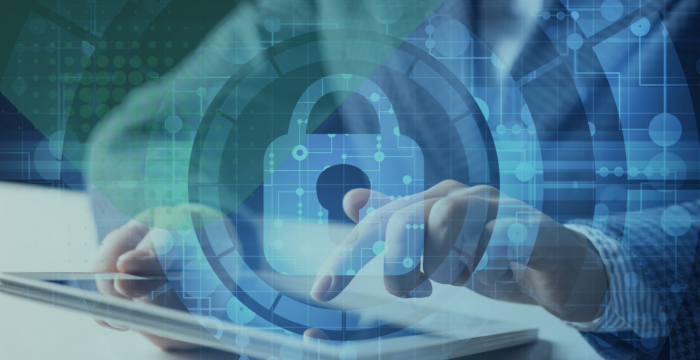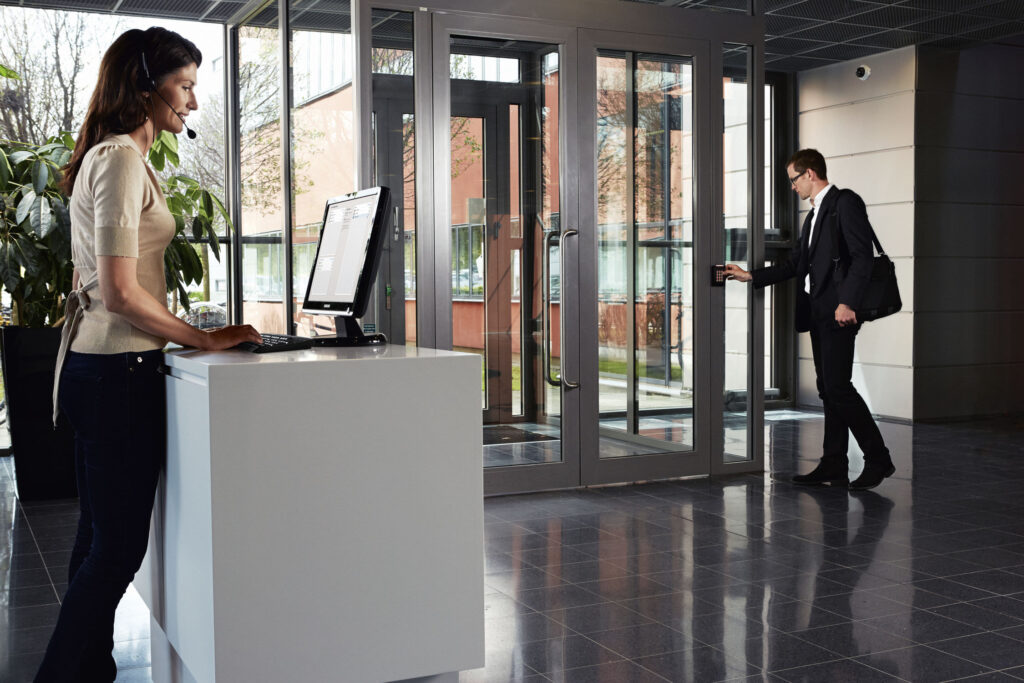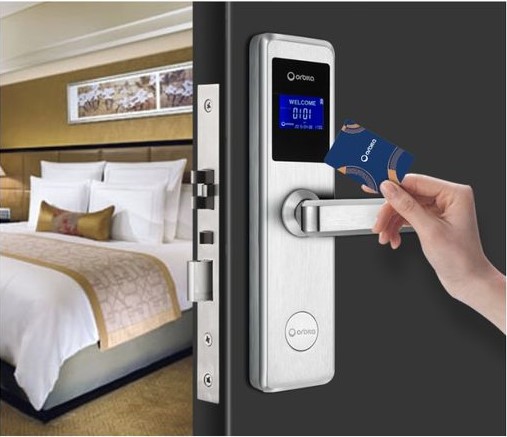Products
Control Systems

1
Access Control Systems
Secure access control systems are considered an effective solution that ensures protection and flexibility in work environments, allowing for customizable access permissions according to needs. Widely used in electronic access control, this system enables users to access using biometric fingerprints, cards, magnetic strips, passwords, Bluetooth applications, or mobile applications.
Access control systems play a vital role in maintaining overall security, especially in institutions and areas requiring high levels of protection. Types of systems are categorized based on the needs and requirements of each institution, including the use of biometric standards, RFID technology, card readers, and door access control devices.
Each access point can be individually customized to meet security requirements, and network security is of utmost importance to ensure the safety of the access control system itself, especially in companies dealing with sensitive data.
Access control systems integrate with electronic systems to determine user rights to use computer resources and are adopted in various institutions such as government departments, security agencies, airports, transportation sectors, banks, universities, schools, sports stadiums, and others.
2
License Plate Recognition System
The License Plate Recognition System (or Automatic License Plate Recognition System) is a technology used to detect and identify vehicle license plates as they pass through specific points such as highways, checkpoints, or parking lots. This technology relies on a set of cameras installed in strategic locations, which capture images of license plates and then process them using specialized optical character recognition (OCR) software.
The system analyzes the captured image and extracts the text found on the license plate, which is then converted into readable text that can be processed by computers. Subsequently, the extracted text is compared to a database containing registered and wanted vehicle information, and appropriate actions are taken based on the results.
This technology is used in various applications such as traffic monitoring, recording entry and exit from specific areas, inspecting vehicles at security checkpoints, and tracking lost or stolen vehicles. The License Plate Recognition System is considered an important part of security and surveillance systems in many urban and industrial environments.

3
Time Attendance System
The Attendance and Time Management System is a system used by companies and organizations to record and track the attendance and departure of employees. The purpose of this system is to facilitate the process of recording employees’ working hours and monitor them accurately, using advanced techniques and specialized tools.
The Attendance and Time Management System typically includes a set of devices and software that facilitate the process of recording attendance and departure, including the following:
- Attendance and departure recording devices: These usually include fingerprint devices, RFID cards, or facial recognition devices used by employees to register their entry and exit.
- Attendance and departure management software: This software helps in collecting and processing attendance and departure data and generating accurate reports on employees’ working hours. It allows managers and employees to access and control their personal data.
- Alarm and alert systems: These systems help in notifying employees and management when any attendance or departure violations occur, such as unexcused tardiness or absence.
- Integration with Human Resources (HR) systems: The system integrates with Human Resources Management systems to simplify attendance and departure tracking processes and facilitate HR management.
The Attendance and Time Management System helps companies improve time management and increase efficiency in recording and monitoring operations, contributing to improved discipline and performance. It also contributes to reducing absenteeism and improving human resource planning.

4
Hotel Management and Door Lock System
The Hotel Management and Door Lock System is a comprehensive system used to manage and operate hotels and hospitality establishments, starting from reservation management to controlling and managing electronic lock systems within the hotel.
This system includes a range of functions and features that enable hotel management to organize and execute various daily operations and provide a comfortable and seamless experience for guests. Some of these features include:
- Reservation Management: The system allows hotel staff to easily manage reservations, including receiving bookings, confirming reservations, and managing changes in bookings.
- Room Management: The system helps track the status of available and reserved rooms, organize room cleaning operations, and provide guest services inside the rooms.
- Invoicing and Billing: The system can generate invoices for guests and collect financial payments through various methods, including cash, credit cards, and bank transfers.
- Hotel Door Lock Management: The system allows control of electronic lock systems in the rooms, enabling the assignment and change of access codes for guests and tracking access to the rooms.
- Reports and Analytics: The system provides detailed reports and analytics on hotel performance, booking rates, room revenues, and more, helping in strategic decision-making and process improvement.
By using the Hotel Management and Door Lock System, hotels can improve the efficiency of daily operations and provide a comfortable and distinctive experience for guests, enhancing their reputation and increasing customer satisfaction.

5
Conference Management System
The Conference Management System is a comprehensive system used to organize and manage events and conferences. This system assists in organizing all aspects of the conference, including participant registration, schedule management, session and seminar organization, speaker management, distribution of promotional materials, data collection, and reporting.
Features of the Conference Management System include:
- Participant Registration: Allows for easy and efficient participant registration through online registration forms, electronic payment, and ticket type selection.
- Schedule Management: Facilitates the organization and management of the event schedule, including scheduling session times, seminars, lectures, and breaks.
- Speaker Management: Enables the management of speaker information, including uploading biographies and scheduling sessions.
- Distribution of Promotional Materials: Provides promotional materials such as digital conference programs and advertising materials to participants easily and efficiently.
- Reporting: Provides detailed reports on participant attendance, event evaluation, and other important data for analyzing conference performance and improving future event planning.
The Conference Management System helps organize and facilitate the flow of events and conferences effectively, making it easier for organizers to manage resources and successfully achieve their goals.
